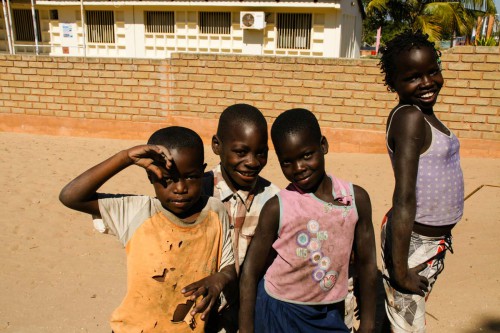A huge mountain-like dump of toxic soil taken from mines right in Soweto is symbolic for what it was and still is: a synonym for poverty, struggle and racial discrimination, to this very day. Would anybody dream of littering the wealthy northern suburbs of Johannesburg with dangerous substances? The half-hearted attempts to keep the toxic dust from spreading in the neighborhood by planting trees, grass and sprinkling water on it is painfully revealing how little progress has been made so far…
Chico, a former resident of Soweto, took me around in his car for hours, telling me about the history, the people, the living conditions and problems that people still face here. Nevertheless, he also pointed out the signs of progress.
The poverty has not disappeared with the Apartheid regime, it is right there. Tin houses, boiling hot in the summer and freezing cold in the winter, dominate the township. The misery is not without irony. Some of the new government housing project are empty: people refuse to move in because of the 150 Rands rent per month (USD 20), or because they cannot bring their goats and chicken, or even because they are afraid of envious neighbors who get funny ideas if somebody can pay as much as 20 dollars rent. So they stay in old guesthouses, initially built only for men or in a tin house with a leaking roof.
Looking through holes the size of a thumbnail is sobering. I had read about all this, but to see it with your own eyes is a different story. To imagine the rain pouring in and turning the floor into a muddy mess is scary. Chico took me to a friend’s home. If you can call it such, though… Two small rooms in the tin house shelter six people. A few pots neatly piled up, two beds for six people and a few boxes was the bleak reality. Two men sat around a small, coal-powered stove made of bricks. During the day nobody dreams of burning the precious fuel. The small pieces of coal were taken from a deserted coal-powered plant.
This family was waiting for government housing where they would only pay for electricity. A large number painted on their tin door is evidence of them applying for a home that deserves that name. Neither of the two men spoke English. I did not dare to ask for how long they have lived in Johannesburg. Either they have moved there recently or have had little contact with people outside Soweto. Getting into the city has been difficult: minibuses are packed beyond our imagination, trains are equally crowded. People hang onto the doors of the overcrowded trains and accidents are common.
Other things I learned here: minibuses are so terribly crowded because the drivers pay a set amount to the owner, so the more passengers they squash in, the more they earn. Since they all dream of driving their own minibus, those crowed buses actually help to make this dream come true... Another lesson learned: have you ever wondered, like me, why tires sit on the roof of tin houses? Here in Soweto my question was finally answered - they serve as lightening rods!
But there is a very different side to Soweto. A small section could be easily coined millionaires’ row. In Diepkloff, grand houses line the street. The ultimate status symbols are palm trees, stone sculptures of eagles and BMWs parking in the front. Quite interesting is the absence of barbwire and guards. Who lives here? Many of the houses are owned by the newly emerging black middle class, the “Black Diamonds”. Others were built (those less grand) already during the times of Apartheid when those few blacks who had money could not live in white neighborhoods. And there is what Chico called middleclass homes, nice modest houses.
Soweto has other surprises at hand. Who would expect Africa's biggest hospital there? It covers a few blocks and is called after Chris Hani, the ANC leader. And there is Soccer City, right outside Soweto, a giant salad bowl. It was here where the first and last match of the 2010 FIFA World Cup took place, on top of the opening and closing ceremony.
An unbelievable 1,3 million people live today in Soweto, from lots of different ethnic groups but a racial mix is impossible to detect. 99,3% of Soweto’s population is black and 0,6% is colored. That leaves 0,1% of what?
Picture by Jason Risley.


No comments yet.